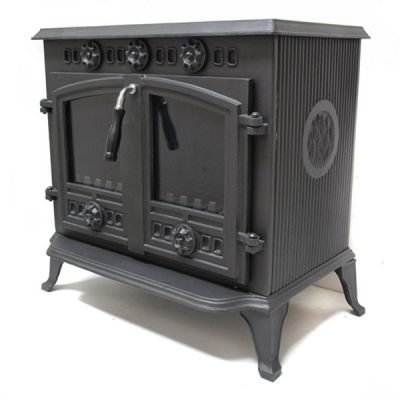| Tags | care and maintenance outdoor living garden furniture guides wood burning stove guides garden inspiration home inspiration environmental issues company news show all posts |
Choosing The Right Fuel For Your Multifuel Stove
As an alternative way of heating rooms in your home, a multifuel stove can be a great choice over the central heating that you normally use. And with a range of benefits, multifuel stoves have become increasingly popular in recent years.
If you have a traditional wood burning stove, you'll know exactly what you need to do to heat your home – burn some wood, as the name handily suggests.
But what about a multifuel stove? Here's a simple guide to the advantages and disadvantages of the different kinds of fuel available for multifuel stoves, which should help you to choose the appropriate option for you.

A Note About Smoke Free Zones
In a bid to make the atmosphere and air cleaner, smoke free zones have been introduced in some parts of the UK. In these areas, people are banned from burning certain types of fuel, so it is important to do your research first.
Some wood burning stoves and multifuel stoves are exempt from these limitations, whilst others may be used with certain fuels.
The Department for Environment, Food and Rural Affairs (Defra) provides a useful information page that enables you to check whether you are in a smoke free zone, and if so, which fuels you may burn legally.
Breaking the rules can land you with a fine of up to £1,000 – so it's certainly worth taking a moment to check.
So, with that in mind, let's take a look at the fuel options available for multifuel stove owners...
Wood
As well as in wood burning stoves, wood can also be used to power a multifuel stove.
Benefits Of Wood Fuel
- Wood fuel is considered carbon neutral, so is not damaging to the environment.
- It is a much cheaper alternative to using electricity or gas powered heaters.
- Often, wood can be bought in bulk for a good discount, and you can sometimes even source your own for free.
Drawbacks Of Wood Fuel
- A multifuel stove might not burn wood as effectively as a dedicated wood burning stove as it may not be optimised for circulating air from the top, which is what is needed for burning wood. Check the model to ensure that it provides this feature if you intend to use wood in a multifuel stove.
- Wood fuel can be bulky, so may be difficult to store effectively if you don't have the space.
- Unless you buy seasoned wood, you'll need to keep your wood stored for up to a year to dry out enough to be used as an effective fuel.
Coal
Another fuel option for multifuel stoves is coal.
Benefits Of Coal
- Coal often burns better and more effectively in a multifuel stove than wood, because it burns with a flow of air from underneath, while wood needs a circulation of air from the top. A multifuel stove might not always be optimised for both coal and wood burning, so it's worth checking first.
Drawbacks Of Coal
- Burning coal produces much more carbon dioxide than wood, and therefore is less environmentally.
- Coal is more expensive than wood fuel, meaning it costs more to run a multifuel stove using coal as fuel.
- Coal is not a renewable energy source.
Peat
Peat is a naturally occurring substance that may also be used in multifuel stoves to provide heat.
Benefits Of Peat
- Peat produces a slow burn which can be beneficial on chilly evenings when you want to just warm the room up a little, rather than having a roaring flame.
- It can be combined with wood or coal if you require more heat.
- Peat fuel is cheaper than coal, and in some cases also less expensive than wood fuel.
Drawbacks Of Peat
- Peat is not a renewable source of fuel.
- It may not be an environmentally friendly option, as peat releases carbon dioxide into the atmosphere.
- Some people are concerned that natural habitats and landscapes may be altered or damaged by the cutting of peat.
- Burning peat in a multifuel stove can produce a lot of ash, meaning the stove will require more regular cleaning.
Smokeless Fuel
First developed to conform with the Clean Air Act in 1956 following 1952 great smog of London, smokeless fuels can also be used in multifuel stoves, and are considered by many to be a more environmentally friendly option.
Benefits Of Smokless Fuel
- Smokeless fuel complies with Defra legislation in smoke free zones.
- Smokeless fuels are considered environmentally friendly as there is little to no smoke given off.
- Compared to coal, smokeless fuel releases up to 20% less carbon dioxide.
- Smokeless fuels leave less residue and unburned fuel in the burner so are cleaner to use.
- As much as a third more heat can be given off from smokeless fuels than standard coal.
Drawbacks Of Smokeless Fuel
- Smokeless fuels may be more expensive to buy than traditional coal or wood fuel.
Conclusion
When purchasing a multifuel stove, there are a number of considerations you need to make.
Amongst these considerations, there are many factors that will affect which type of fuel is best for you to use in your multifuel stove. When choosing your fuel, consider your budget, the environmental impacts, and also whether you are allowed to burn the fuel of your choice in the area that you live.

